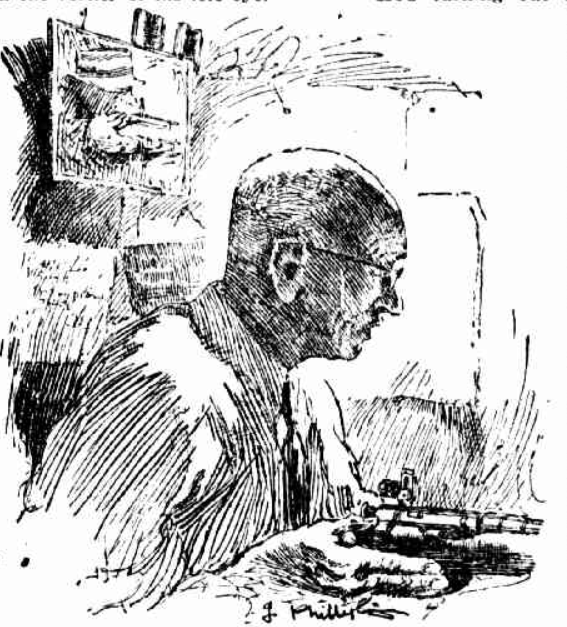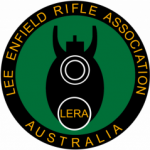Most old timers reckon that the shot which finally dropped Ned Kelly and delivered him into the grim grasp of Sergeant Steele, outside the Glenrowan pub, was fired from a Martini-Henry rifle. Others aver that a pistol sped the fatal bullet. But Alfred “Fred” Taylor, gunsmith of Bathurst Street, Sydney, swears that Ned collected a load of buck-shot from a sawn-off, double-barrelled shotgun
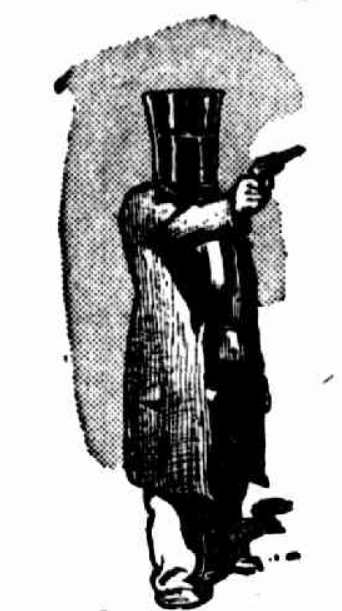
His dad, Stephen Taylor, a famous old Melbourne gunsmith, actually sawed the barrel off the gun that did the trick, he claims. In fact, his dad did even more than that. He made the cartridge that held the buck-shot that knocked Ned in the knees. “It’s no good arguing,” Alfred said to me. “My father kept the police supplied with shotguns and ammunition when they were chasing the Kelly gang, and got a cheque for £5000 out of the deal. The police may have started with rifles, but most of them in the hunt ended up with shotguns, some of which were worth £40 each. After Ned was captured, my father managed to get hold of the shotgun Steele used, and everyone recognised it as the genuine article.”
As a young gunsmith Alfred started business right in the heart of the Kelly country at Benalla. He was very proud of being the son of the man who had made the cartridge that felled the terrible Ned, and considered using it as an advertisement.But a wise old man called on him,and whispered’ in his ear that Benalla would be without a gunsmith if the horrible secret got out that he was even, a relation of anyone who had been mixed up in bringing Ned to his doom. Alfred took the words of the wise man to heart. He cheered when Ned’s name was mentioned, and hissed when the names of his captors came up in conversation. In due course, Alfred became a highly esteemed citizen in Benalla, He even had an editorial written about him in the “Benalla Independent.” A bashed and battered gun was found by one of the locals and taken to Alfred for inspection. Many there were who thought it had actually belonged to Ned, or at least to Dan Kelly or Steve Hart. The township was really excited about it. What Alfred did to that gun way back in May, 1909, resulted in the leading article.Alfred told me all this in his Bathurst Street shop. He poked around underneath his counter and produced an age-yellowed newspaper clipping, mounted on a piece of cardboard. Some ancient journalist had written, ” . . . and the parts have been restored so perfectly as to make one doubt if they had ever been used, or that such a magnificent piece of workmanship could have been done outside a manufactory.” Thirty-three years ago that article made Alfred a very happy young gunsmith. It still makes him happy.
Alfred was born to guns as some men are born to the sea. His father,a Birmingham man, put a rifle in his hands as soon as he was old enough to handle one, and sent him off hunting.Alfred got no game, but managed to fire a charge of small buckshot into his hand. The pellets are still there. He accounted for his wounds by telling his father he had fallen on a broken bottle. No true gunsmith’s son could admit having shot himself. It would have been on a par with George Washington telling his father he hadn’t chopped down the cherry tree. After having lived 65 years with guns to the left of him and guns to the right of him. Alfred can show only one other wound beside the bumps in his hand.As a youth, he fancied himself as a crack trick shot. He would toss stones into the air and pot them with a pea rifle.One day a slug bounced off a brick and came back to hit him in the corner of his left eye.His hand is still firm.”Look at that,” he invited, holding out a steady brown hand. That’s how I did that.” He pointed to a scorecard on the wall, recording a recent rifle match. Beside Alfred’s name were marked 12 bulls for 12 shots at 800 yards. A King’s Cup winner couldn’t do better.

Now, sorrow has blighted the life of Alfred and all other marksmen. The Army has called up all service rifles held by rifle club members.”Few know better than I how the poor fellows feel about handing in their guns,” said Alfred. “Most of them would rather lose a foot. To them their pet rifles are almost human. They know all their little tricks.” Hundreds of marksmen used to bring their rifles regularly to me for overhaul. It was my job to see that they were perfect. Barrels had to fit exactly into their wooden bedding. Not even an error of one ten-thousandth of an inch was allowable.”Strangely enough, Alfred never used instruments to judge the accuracy of his work. Touch, sense, and observation are enough for him. He is so confident of his judgement that he will guarantee perfect accuracy for six months of any rifle he handles.”And now all those perfect rifles will be placed in the hands of raw recruits,” he said, sadly. “It is horrible to think what they will do to them.”
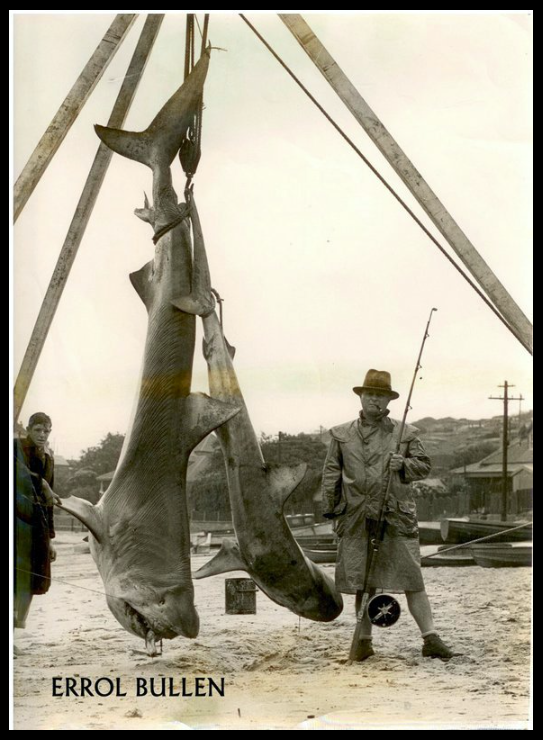
A thick-set man came from the rear of the shop, three gun cases slung over his shoulder, and passed out the door. “That’s Errol Bullen, the big game angler,” said Alfred. “He’s just off to hand his rifles over. Every one is a perfect gem.” Alfred agrees with the rest of the riflemen who maintain that they should be called up with their own rifles and used as snipers and guerrilla fighters.
In 1912, Alfred helped to make the first 303 rifles produced in Australia. He was employed in Lithgow at what is now the biggest small arms factory in Australia. “When this war broke out I offered my services to the factory again, and was told I wasn’t needed.”
Pride of Alfred’s life is his son, whom he has trained in the family art of gunmaking. “That boy’s good all right,” he said.”The Government asked him if he could turn out a certain number of Verey light pistols a month. Could he? He’s turning out 50 percent, more than they asked for. The pistols are coming out of his factory not in dozens, but hundreds.”
The back of Alfred’s shop is a joy for sportsmen.Guns are everywhere. Old and new shotguns line the walls, their polished walnut butts and barrels shining brightly. There’s a cheerful smell of gun oil and sawdust. Pictures of gundogs are stuck everywhere.”I love dogs as much as guns,”declared Alfred. Fox terriers are the boys for me. They may not be gun dogs, but they’re great pals.”And he went on to tell me of the sorrow he felt when his 16-year-old terrier died a few weeks ago.
He picked up a gun stock he was making, and was soon happy again,as he chipped and sawed at the tough rough walnut. “More than 90 per cent, of sportsmen who break the butts of their guns do so trying to knock out wounded game.” he declared,
As he chipped. “They miss and clout the ground. And that’s where I come in.”
Smith’s Weekly Sat 17 Jan 1942
Addendum
A big thank you to one of LERAA Facebook Groups top contributors Trevor Wiles
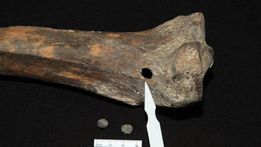
“The post-mortem of Ned conducted when they dug him up before his final move, showed a couple of holes in his legs from buckshot. They even recovered some pellets. This lends truth to Taylor’s story.”
